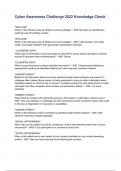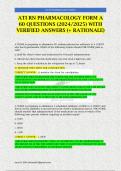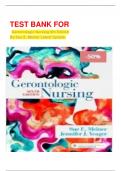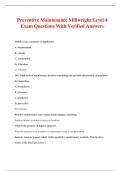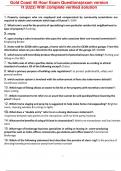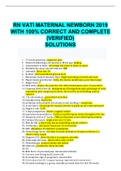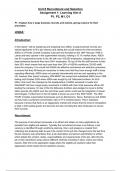what the textbook covers, including its purpose, scope, and key themes. Highlight the author's credentials and the book's relevance in the field of materials management.2. **Importance of Materials Management**: Discuss the role and
importance of materials management in supply chain and operations management. Explain how effective materials management contributes to overall organizational efficiency and profitability.3. **Key Concepts and Topics**: Outline the
major concepts and topics presented in the book. This might include inventory management, procurement, logistics, supply chain coordination, and technology's role in materials management.4. **Structure and Organization**: Describe how
the book is structured. Mention how the chapters are organized and how they build upon each other to provide a comprehensive understanding of materials management.5. **Updates and New Features**: Since this is the 9th edition, discuss
any new updates or features that have been added. This might include new case studies, updated data, or recent trends in materials management.6. **Practical Applications**: Provide examples of how the concepts in the book are applied in
real-world scenarios. This can include industry-specific applications or case studies.7. **Conclusion**: Summarize the key takeaways from the book and its significance to students and professionals in the field of materials
management.Here's a rough outline to help you get started:### Introduction- **Purpose of the Book** - Overview of materials management - Relevance to students and professionals### Importance of Materials Management- **Role in
Supply Chain Management** - Efficiency and cost-effectiveness - Impact on organizational performance### Key Concepts and Topics- **Inventory Management** - Techniques and strategies- **Procurement** - Processes and best
practices- **Logistics** - Transportation and warehousing- **Technology** - Role of IT in materials management### Structure and Organization- **Chapter Breakdown** - Overview of each chapter - How chapters interconnect###
Updates and New Features in the 9th Edition- **New Content** - Recent trends and data- **Enhanced Features** - Additional case studies or exercises### Practical Applications- **Real-World Examples** - Industry applications - Case
studies and their relevance### Conclusion- **Summary of Key Points** - Importance of materials management - Contributions of the textbookFeel free to expand or adjust these sections based on what you find most relevant. If you need
more detailed content on any specific section, let me know!
TEST BANK FOR
Introduction to Materials Management, 9th edition Chapman
Chapter 1-17
Chapter 1 Introduction to Materials Management
1) Select the best answer to the following:
A) traditionally the supply-production-distribution functions have reported to different
departments
B) the supply, production and distribution functions are part of a total system
C) materials flow into an organization, are processed in some way and distributed to the consumer
D) all the above are correct
E) none of the above is correct
Answer: D
2) Manufacturing is important to the economy because:
A) it generates wealth
B) it supports service industries
C) it adds value to products
D) all of the above
E) none of the above
Answer: D
3) Which of the following is the best statement about the operating environment in which
operations management functions?
A) Most organizations do not need to worry about competition
B) Customers are more demanding
C) Government regulation is not important for companies
D) Price is more important than quality
E) None of the above is true
Answer: B
4) Which of the following statements is best regarding order winners?
A) They persuade a company's customers to choose its product
B) They are the same in every market
C) They are the same as order qualifiers, only better
D) They are present in every product
E) All the above are true
Answer: A
Management**: Explain transportation, warehousing, and distribution management. Use relevant questions to detail logistics practices and strategies. - **Technological Integration**: Discuss how technology influences logistics, supported by test bank questions. - **Technology in Materials
Management** - **Technology Trends**: Focus on ERP systems, automated inventory management, and data analytics. Use test bank questions to delve into how these technologies impact materials management.**3. Structure and Updates** - **Book Structure**: Use the test bank to
understand how topics are introduced and developed. This will help you explain the textbook's structure and organization. - **New Features**: Highlight updates and new content in the 9th edition. Compare these updates with earlier editions, using questions from the test bank to identify
significant changes or additions.**4. Practical Applications** - **Industry Examples**: Use case studies and practical examples from the test bank to illustrate how materials management concepts are applied in different industries. - **Problem-Solving**: Address common problems and
solutions in materials management, as reflected in the test bank questions.**5. Conclusion** - **Summary of Key Points**: Summarize the main takeaways from the textbook, emphasizing the importance of materials management. Use test bank questions to reinforce key concepts and their
practical relevance.### Example Outline Using Test Bank1. **Introduction** - Overview of the textbook and its significance - Author’s background and relevance2. **The Importance of Materials Management** - Role in the supply chain - Impact on organizational performance3. **Key
Concepts and Topics** - **Inventory Management**: Detailed discussion using test bank questions - **Procurement**: Analysis based on questions related to procurement - **Logistics**: Overview with reference to test bank content - **Technology**: Exploration of technological tools
and trends4. **Structure and Organization** - Breakdown of chapters and their interconnections - Updates and new features in the 9th edition5. **Practical Applications** - Industry-specific examples and case studies from the test bank - Problem-solving scenarios6. **Conclusion** - Recap
of the textbook’s contributions to the fieldUsing the test bank in this way will help you create a thorough, well-structured introduction that covers all critical aspects of the textbook. If you have specific questions from the test bank that you’d like to include or need further assistance with integrating
them, feel free to share!
, 5) Which of the following strategies has the shortest delivery lead time and the least customer
input?
A) Engineer-to-order
B) Make-to-order
C) Assemble-to-order
D) Make-to-stock
6) Sure, I can help with that! For a 5000-word introduction to *Introduction to Materials Management, 9th Edition* by Stephen N. Chapman, you might want to focus on the following key areas:1. **Overview of the Textbook**:
Summarize what the textbook covers, including its purpose, scope, and key themes. Highlight the author's credentials and the book's relevance in the field of materials management.2. **Importance of Materials Management**:
Discuss the role and importance of materials management in supply chain and operations management. Explain how effective materials management contributes to overall organizational efficiency and profitability.3. **Key
Concepts and Topics**: Outline the major concepts and topics presented in the book. This might include inventory management, procurement, logistics, supply chain coordination, and technology's role in materials management.4.
**Structure and Organization**: Describe how the book is structured. Mention how the chapters are organized and how they build upon each other to provide a comprehensive understanding of materials management.5. **Updates
and New Features**: Since this is the 9th edition, discuss any new updates or features that have been added. This might include new case studies, updated data, or recent trends in materials management.6. **Practical
Applications**: Provide examples of how the concepts in the book are applied in real-world scenarios. This can include industry-specific applications or case studies.7. **Conclusion**: Summarize the key takeaways from the book
and its significance to students and professionals in the field of materials management.Here's a rough outline to help you get started:### Introduction- **Purpose of the Book** - Overview of materials management - Relevance to
students and professionals### Importance of Materials Management- **Role in Supply Chain Management** - Efficiency and cost-effectiveness - Impact on organizational performance### Key Concepts and Topics- **Inventory
Management** - Techniques and strategies- **Procurement** - Processes and best practices- **Logistics** - Transportation and warehousing- **Technology** - Role of IT in materials management### Structure and
Organization- **Chapter Breakdown** - Overview of each chapter - How chapters interconnect### Updates and New Features in the 9th Edition- **New Content** - Recent trends and data- **Enhanced Features** - Additional
case studies or exercises### Practical Applications- **Real-World Examples** - Industry applications - Case studies and their relevance### Conclusion- **Summary of Key Points** - Importance of materials management -
Contributions of the textbookFeel free to expand or adjust these sections based on what you find most relevant. If you need more detailed content on any specific section, let me know!
Answer: D
7) Which of the following statements is best?
A) The supply chain includes all activities and processes to provide a product or service to a
customer
B) Material in the supply chain usually flows from producer to customer
C) The supply chain contains only one supplier
D) All of the above are true
E) A and B only are true
Answer: E
8) Companies A and B supply company C, which supplies customers D and E. Which of the
following statements is best?
A) The supply chain for company A includes B, C, D, and E
B) The supply chain for company B includes A, C, D and E
C) The supply chain for company C includes A, B, D, and E
D) All the above are true
Answer: C
9) Which of the following statements is best?
A) The basic elements of a supply chain are supply, production, and distribution
B) The elements of a supply chain are interdependent
C) Design information generally flows from customer to supplier
D) All the above are true
Answer: D
10) Which of the following is the best statement about the environment in which
operations management functions?
A) Most organizations do not need to worry about competition
B) World-wide competition is not significant for most companies
C) Government regulation is not important for companies
D) Customers are more demanding
E) None of the above is true
Answer: E Management**: Explain transportation, warehousing,
and distribution management. Use relevant questions to detail logistics practices and
strategies. - **Technological Integration**: Discuss how technology influences
logistics, supported by test bank questions. - **Technology in Materials Management**
- **Technology Trends**: Focus on ERP systems, automated inventory management,
and data analytics. Use test bank questions to delve into how these technologies impact
materials management.**3. Structure and Updates** - **Book Structure**: Use the test
bank to understand how topics are introduced and developed. This will help you explain
the textbook's structure and organization. - **New Features**: Highlight updates and
new content in the 9th edition. Compare these updates with earlier editions, using
questions from the test bank to identify significant changes or additions.**4. Practical
Applications** - **Industry Examples**: Use case studies and practical examples from
the test bank to illustrate how materials management concepts are applied in different
industries. - **Problem-Solving**: Address common problems and solutions in
materials management, as reflected in the test bank questions.**5. Conclusion** -
**Summary of Key Points**: Summarize the main takeaways from the textbook,
,emphasizing the importance of materials management. Use test bank questions to
reinforce key concepts and their practical relevance.### Example Outline Using Test
Bank1. **Introduction** - Overview of the textbook and its significance - Author’s
background and relevance2. **The Importance of Materials Management** - Role in
the supply chain - Impact on organizational performance3. **Key Concepts and
Topics** - **Inventory Management**: Detailed discussion using test bank questions
- **Procurement**: Analysis based on questions related to procurement -
**Logistics**: Overview with reference to test bank content - **Technology**:
Exploration of technological tools and trends4. **Structure and Organization** -
Breakdown of chapters and their interconnections - Updates and new features in the 9th
edition5. **Practical Applications** - Industry-specific examples and case studies from
the test bank - Problem-solving scenarios6. **Conclusion** - Recap of the textbook’s
contributions to the fieldUsing the test bank in this way will help you create a thorough,
well-structured introduction that covers all critical aspects of the textbook. If you have
specific questions from the test bank that you’d like to include or need further assistance
with integrating them, feel free to share!
11) If a firm wishes to maximize profit, which of the following objectives are in conflict?
I. Maximize customer service
II. Minimize production costs
III. Minimize inventory costs
IV. Minimize distribution costs
A) All the above
B) None of the above
C) I and II only
D) I and III only
E) II and III only
Answer: A
Absolutely! Here's a detailed expansion of the introduction to *Introduction to Materials Management, 9th Edition* by Stephen N. Chapman. This extensive content will cover the essential aspects of the textbook in depth. ---**Introduction to Materials Management, 9th Edition by Stephen N.
Chapman: A Comprehensive Overview****I. Introduction to the Textbook**Stephen N. Chapman’s *Introduction to Materials Management* stands as a pivotal text for understanding the complexities of materials management and its critical role in modern supply chain systems. Now in its 9th
edition, this textbook provides a comprehensive examination of materials management, offering both theoretical foundations and practical applications. This introduction aims to outline the key elements of the book, its significance, and how it equips students and professionals with the necessary tools
to excel in the field.**A. Purpose and Scope**The primary purpose of Chapman’s textbook is to provide an in-depth understanding of materials management, which encompasses the planning, organizing, and controlling of materials flows from procurement through production to delivery. The scope
of the book covers essential topics such as inventory management, procurement, logistics, and supply chain integration, ensuring a holistic view of the field. The 9th edition builds upon previous editions with updated content, reflecting the latest trends and technologies.**B. Author’s Credentials and
Relevance**Stephen N. Chapman is a well-respected figure in the field of supply chain and materials management. His extensive experience as both an educator and practitioner lends considerable authority to the text. His insights are grounded in real-world applications and academic rigor, making
this textbook an invaluable resource for understanding the dynamic nature of materials management.**II. The Importance of Materials Management**Materials management plays a crucial role in ensuring that materials and products are available at the right time, place, and cost. Effective materials
management contributes to organizational efficiency, cost control, and customer satisfaction. This section delves into the significance of materials management and its impact on various organizational processes.**A. Role in Supply Chain Management**Materials management is integral to the broader
supply chain management process. It involves coordinating the flow of materials and information across different stages of the supply chain. By optimizing inventory levels, streamlining procurement processes, and improving logistics operations, materials management helps organizations reduce costs
and enhance overall efficiency.**B. Impact on Organizational Performance**Effective materials management directly influences organizational performance by ensuring that resources are utilized efficiently. It minimizes waste, reduces lead times, and improves service levels. This, in turn, enhances
competitiveness and profitability. The textbook highlights case studies and examples that illustrate how effective materials management can lead to significant improvements in operational performance.**III. Key Concepts and Topics**Chapman’s textbook covers a broad range of topics essential for
understanding materials management. Each chapter delves into specific areas, providing detailed explanations, case studies, and practical insights.**A. Inventory Management**Inventory management is a core component of materials management. It involves controlling and overseeing the inventory
of raw materials, work-in-progress, and finished goods. The textbook discusses various inventory management techniques, including Just-in-Time (JIT), Economic Order Quantity (EOQ), and ABC analysis. These techniques help organizations balance inventory levels with demand, reducing carrying
costs and improving cash flow.**1. Just-in-Time (JIT)**JIT is a strategy aimed at reducing inventory levels by receiving goods only as they are needed in the production process. This approach minimizes waste and lowers inventory holding costs. The textbook explores the principles of JIT, its
Which of the following statements
implementation challenges, and its impact on supply chain efficiency.**2. Economic Order Quantity (EOQ)**EOQ is a formula used to determine the optimal order quantity that minimizes the total
is best?
I. The conflict between marketing, finance and production centers on customer service,
disruption to production, and inventory levels
II. Marketing's objectives can be met with higher inventories
III. Finance's objectives can be met with higher inventories
IV. Production's objectives can be met with higher inventories
A) All of the above are true
B) I and II only
C) I, II, and III only
D) I, II, and IV only
E) II, III, and IV only
Answer: D
12) Which of the following is normally a major activity of materials management?
I. Manufacturing planning and control
II. Physical supply/distribution
A) Both I and II
B) Neither I nor II
C) I only
D) II only
Answer: A
13) The objective of materials management is to:
I. Provide the required level of customer service
II. Maximize the use of the firm's resources
A) I only
B) II only
C) I and II
D) neither I nor II
, Answer: C
14) Which of the following is/are primary activities of manufacturing planning and control?
I. Production planning
II. Implementation and control
III. Inventory management
A) I and II only
B) II and III only
C) I and III only
D) All the above are primary activities
Answer: D
Management**: Explain transportation, warehousing, and distribution management. Use relevant questions to detail logistics practices and strategies. - **Technological Integration**: Discuss how technology influences logistics, supported by test bank questions. - **Technology in Materials
Management** - **Technology Trends**: Focus on ERP systems, automated inventory management, and data analytics. Use test bank questions to delve into how these technologies impact materials management.**3. Structure and Updates** - **Book Structure**: Use the test bank to understand
how topics are introduced and developed. This will help you explain the textbook's structure and organization. - **New Features**: Highlight updates and new content in the 9th edition. Compare these updates with earlier editions, using qu estions from the test bank to identify significant changes or
additions.**4. Practical Applications** - **Industry Examples**: Use case studies and practical examples from the test bank to illustrate how materials management concepts are applied in different industries. - **Problem-Solving**: Address common problems and solutions in materials
management, as reflected in the test bank questions.**5. Conclusion** - **Summary of Key Points**: Summarize the main takeaways from the textbook, emphasizing the importance of materials management. Use test bank questions to reinforce key concepts and their practical relevance.###
Example Outline Using Test Bank1. **Introduction** - Overview of the textbook and its significance - Author’s background and relevance2. **The Importance of Materials Management** - Role in the supply chain - Impact on organizational performance3. **Key Concepts and Topics** -
**Inventory Management**: Detailed discussion using test bank questions - **Procurement**: Analysis based on questions related to procurement - **Logistics**: Overview with reference to test bank content - **Technology**: Exploration of technological tools and trends4. **Structure and
Organization** - Breakdown of chapters and their interconnections - Updates and new features in the 9th edition5. **Practical Applications** - Industry-specific examples and case studies from the test bank - Problem-solving scenarios6. **Conclusion** - Recap of the textbook’s contributions
to the fieldUsing the test bank in this way will help you create a thorough, well-structured introduction that covers all critical aspects of the textbook. If you have specific questions from the test bank that you’d like to include or need further assistance with integrating them, feel free to
Which of the following is (are) input(s) to manufacturing planning and control?
share!
A) Product description
B) Process description
C) Available facilities
D) Quantities to be produced
E) All the above are inputs
Answer: E
15) ry into three groups based on their importance and value. This technique helps prioritize inventory management efforts and allocate resources effectively. The textbook explains the criteria for classifying inventory into A, B, and C categories and how to apply this analysis to improve
inventory control.**B. Procurement**Procurement involves the process of acquiring goods and services from suppliers. It encompasses activities such as supplier selection, negotiation, and contract management. The textbook provides insights into best practices for procurement,
including supplier relationship management and strategic sourcing.**1. Supplier Selection**Choosing the right suppliers is critical for ensuring quality, cost-effectiveness, and reliability. The textbook discusses criteria for evaluating suppliers, including price, quality, and delivery
performance. It also highlights the importance of building strong relationships with suppliers to enhance collaboration and reduce risks.**2. Negotiation and Contract Management**Effective negotiation and contract management are essential for securing favorable terms and conditions
with suppliers. The textbook covers negotiation strategies, contract drafting, and performance monitoring. It provides practical tips for managing supplier contracts and resolving disputes.**C. Logistics**Logistics involves the movement and storage of materials and products throughout
the supply chain. It includes transportation, warehousing, and distribution. The textbook explores various logistics strategies and practices, emphasizing the importance of efficient logistics management in reducing costs and improving service levels.**1. Transportation
Management**Transportation management focuses on optimizing the movement of goods from suppliers to customers. The textbook discusses transportation modes, route planning, and carrier selection. It also highlights the role of technology in improving transportation efficiency and
tracking.**2. Warehousing**Warehousing involves the storage and handling of inventory. The textbook covers warehouse layout design, inventory control, and order fulfillment processes. It emphasizes the importance of efficient warehousing practices in reducing lead times and
improving order accuracy.**D. Technology’s Role in Materials Management**Technology plays a vital role in modern materials management. The textbook examines various technological tools and systems that enhance materials management processes, including Enterprise Resource
Planning (ERP) systems, Automated Inventory Management, and data analytics.**1. Enterprise Resource Planning (ERP)**ERP systems integrate various business functions, including materials management, into a single platform. The textbook explores the benefits of ERP systems, such
as improved data accuracy, real-time visibility, and streamlined processes. It also discusses the challenges of implementing ERP systems and best practices for successful deployment.**2. Automated Inventory Management**Automated inventory management systems use technology to
monitor and control inventory levels. The textbook covers technologies such as barcoding, RFID, and inventory management software. It highlights how these technologies improve inventory accuracy, reduce manual errors, and enhance efficiency.**3. Data Analytics**Data analytics
involves analyzing data to make informed decisions. The textbook discusses the use of data analytics in materials management, including demand forecasting, inventory optimization, and supplier performance analysis. It provides examples of how data-driven insights can improve
decision-making and operational efficiency.**IV. Structure and Organization of the Textbook**The 9th edition of *Introduction to Materials Management* is structured to provide a logical progression of topics, starting with foundational concepts and advancing to more complex issues.
The textbook is organized into several key sections, each building on the previous one to provide a comprehensive understanding of materials management.**A. Chapter Breakdown**Each chapter focuses on a specific aspect of materials management, providing detailed explanations,
examples, and case studies. The chapters are organized to facilitate a step-by-step learning process, starting with basic concepts and progressing to advanced topics.**B. How Chapters Interconnect**The chapters are designed to interconnect and build upon each other. For example, the
concepts of inventory management introduced in early chapters are applied in later chapters on logistics and procurement. This interconnected approach helps readers understand how different aspects of materials management influence one another.**V. Updates and New Features in the
9th Edition**The 9th edition of Chapman’s textbook includes several updates and new features that reflect the latest developments in materials management.**A. New Content**The textbook incorporates recent trends and data, providing a current perspective on materials management. It
includes updated case studies and examples that reflect recent changes in the industry, such as advancements in technology and shifts in global supply chains.**B. Enhanced Features**The 9th edition features enhanced content, including new case studies, practical exercises, and real-
world examples. These additions are designed to provide a more interactive learning experience and help readers apply theoret ical concepts to practical situations.**VI. Practical Applications**Understanding theoretical concepts is crucial, but applying them in real -world scenarios is
equally important. The textbook provides numerous examples of how materials management principles are applied in various industries.**A. Industry-Specific Applications**The textbook includes case studies and examples from different industries, such as manufacturing, retail, and
healthcare. These examples illustrate how materials management practices are tailored to meet the specific needs and challenges of each industry.
**B. Case Studies and Their Relevance**Case studies in the textbook highlight real-world applications of materials management concepts. They provide insights into how organizations have successfully implemented materials management practices to improve efficiency and achieve
business goals. The relevance of these case studies lies in their ability to demonstrate practical solutions to common challenges in materials management.**VII. Conclusion***Introduction to Materials Management, 9th Edition* by Stephen N. Chapman is a comprehensive resource for
understanding the intricacies of materials management. The textbook provides a thorough examination of key concepts, practical applications, and the latest developments in the field. Its structured approach and updated content make it an invaluable tool for students and professionals
seeking to enhance their knowledge and skills in materials management. By covering essential topics such as inventory management, procurement, logistics, and technology, the textbook equips readers with the tools needed to excel in the dynamic and ever -evolving field of materials
management. Its emphasis on real-world applications and practical insights ensures that readers can apply theoretical knowledge to solve real-life challenges and contribute to organizational success.---This expanded introduction provides a detailed examination of the textbook, offering a
comprehensive understanding of its content and significance. If you need further details or specific sections elaborated upon, let me know!
16) Which of the following is NOT an activity of physical supply/distribution?
A) Transportation
B) Factory inventory
C) Warehousing
D) Packaging
E) Materials handling
Answer: B
17) Materials management can be considered a balancing act because:
I. there are trade-offs between customer service and the cost of providing the service
II. priority and capacity must be balanced
A) neither I nor II
B) I only
C) II only
D) I and II
Answer: D
18) If the cost of manufacturing (direct labor and materials) is 50% of sales and profit is 15% of
sales, what would the profit percentage be if the direct costs of manufacturing was reduced from
50% to 47%?

